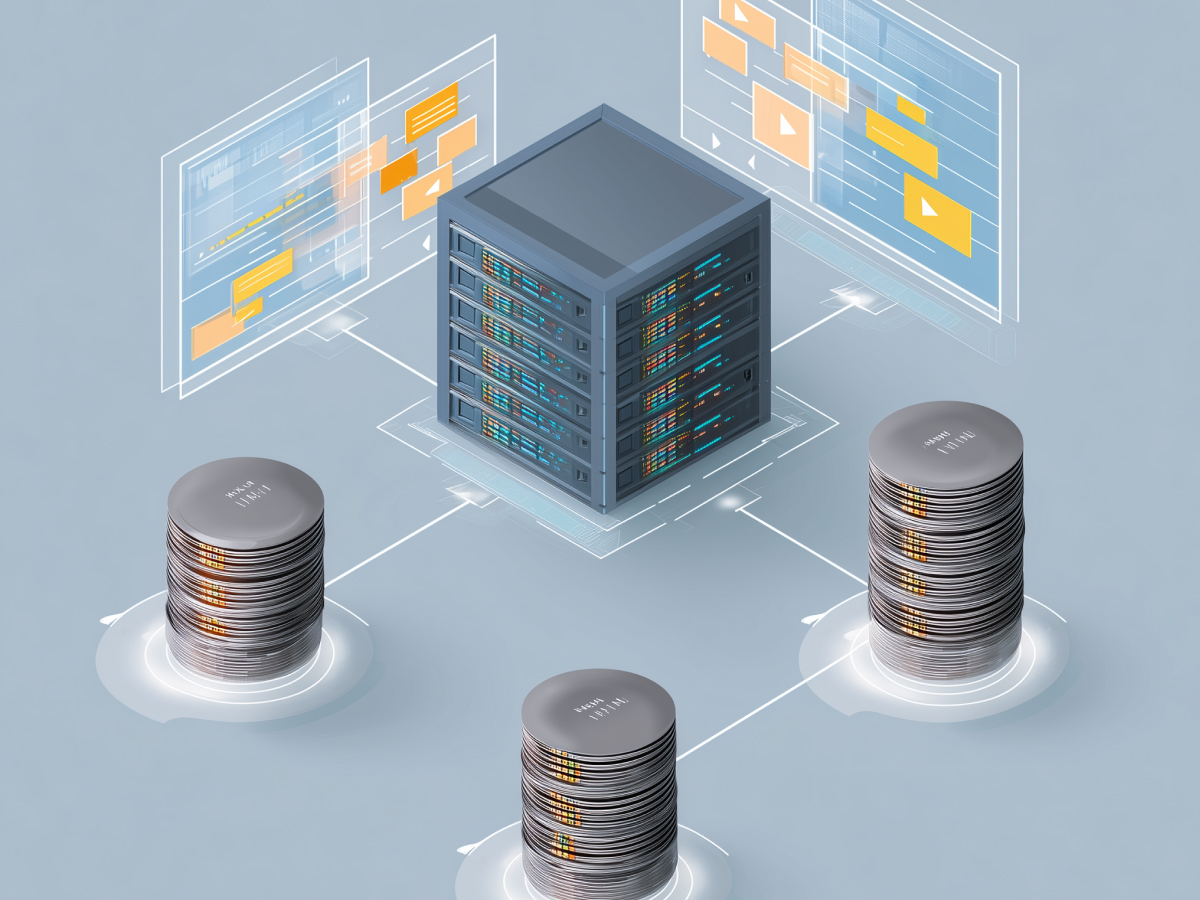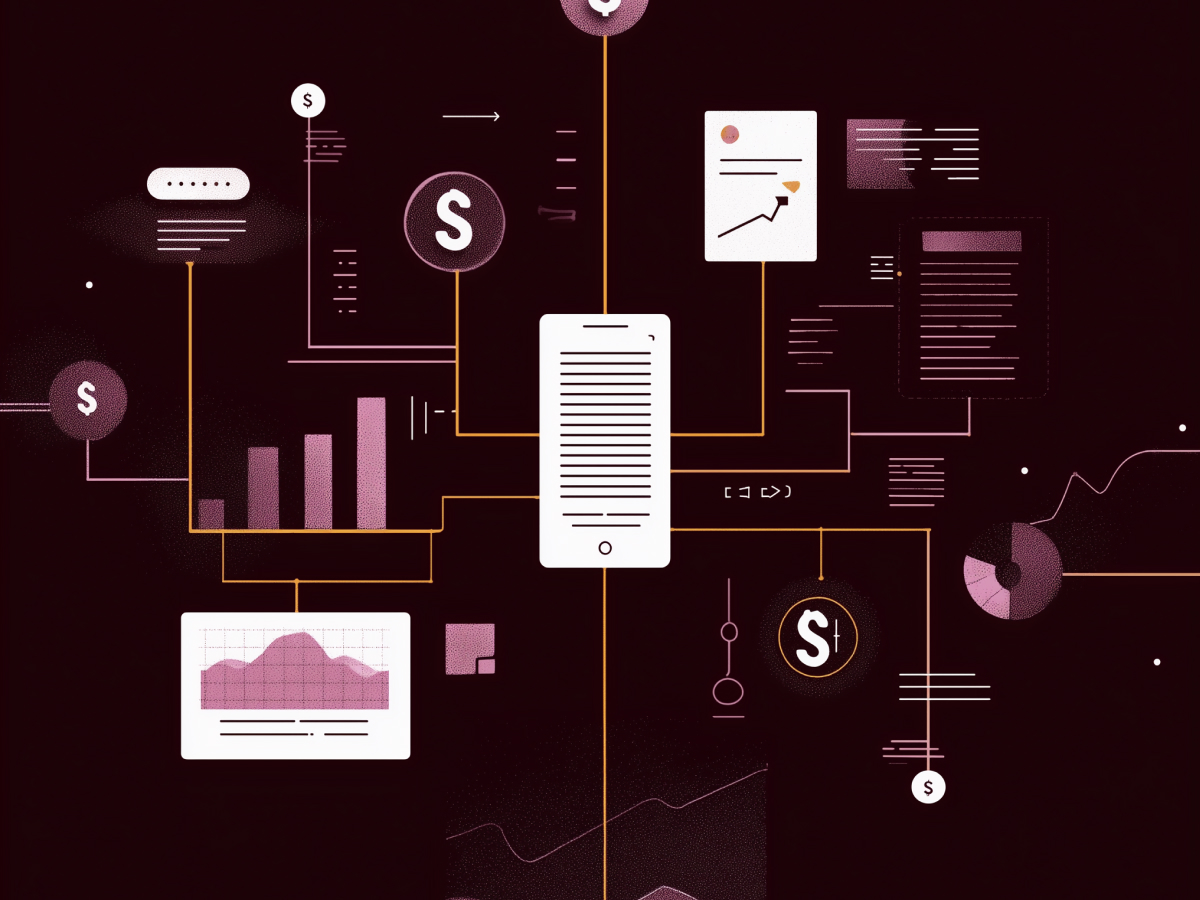Deepfake technologies are enabling sophisticated fraud in corporate settings
Deepfake technologies, AI-generated videos or audio crafted to mimic real executives, are being used by criminals to commit financial fraud. These are no longer amateur attempts. We’re talking about highly realistic voice and video impersonations of top-level executives, used to convince internal teams to transfer large amounts of money. In February 2024, for example, CNN reported that a finance employee at a multinational company was tricked into sending $25 million, believing he was on a video call with his CFO. It wasn’t the CFO. It was a deepfake.
What makes this alarming isn’t just the technology, it’s how easily trust can be exploited in an enterprise environment. When you see your CFO on a call approving a transfer, most people won’t question it. And that’s the problem.
We’re entering a phase where perceived authenticity is no longer a reliable verification method. This changes the model for how we handle identity and trust in digital communications. Executives need to update their mindsets. Assume any video or audio communication can be faked, because it probably can. The solution isn’t to avoid video calls. It’s to build layered verification protocols into financial workflows. You can’t rely on facial recognition or simple email confirmations anymore. We’re past that.
For companies that move serious capital through internal authorizations, it’s critical to build smarter verification systems. These could include multi-party confirmation systems, AI-driven deepfake detection embedded into marketplace tools, and a re-training of internal staff who handle approvals. This isn’t just IT’s concern. It’s a leadership issue.
Deloitte’s research supports this urgency, more than 50% of senior executives already expect that deepfake scams will directly target their organizations. They’re right. Waiting for regulation won’t help. The tools for prevention exist today. Now it’s just a matter of putting them to work.
AI is broadening the threat landscape
AI hasn’t just improved productivity. It’s also made cyberattacks more scalable, faster, and harder to detect. That means more risk, and faster-moving threats. For a long time, social engineering and email phishing were relatively easy for experienced teams to flag and filter. Not anymore. With generative AI, attackers can craft perfect messages using your company’s language, tone, and patterns, down to the way your CEO signs off emails. They can insert malware into files while mimicking internal templates. These emails are not obviously fake, they’re realistic, targeted, and persistent.
Let’s be clear. The scale at which these AI-powered phishing campaigns operate is the real danger. A single bad actor can now generate personalized emails for your entire staff within minutes, and improve them over time by learning from employee responses. We’ve entered a phase where machine learning powers the attacker’s side of the game, turning old-school phishing into an intelligent, evolving system.
These aren’t dramatic scenarios. This is happening. You’re seeing emails from “trusted” senders, the CEO, the CFO, even HR, attached with documents that trigger a breach when opened. Now factor in that these attacks can evolve in real-time and target entry points across your systems, including cloud services, partner integrations, and mobile devices. We’re talking about a multi-surface, AI-amplified attack pattern.
This forces two urgent considerations. First, corporate leaders must review how employee communication is authenticated and monitored. Second, legacy tools, like basic email filters or traditional anti-virus systems, are not enough. Replace them with tools powered by modern AI, preferably ones that incorporate real-time behavioral analysis and anomaly detection.
The Hack Academy noted that financial institutions are prime targets, and highlighted a warning: AI is rewriting the playbook for traditional cyberattacks. The takeaway here is simple. Defending your organization now means matching attacker sophistication, not reacting weeks later to a breach report. AI means cyberattacks are faster. Your response has to be faster too.
These approaches are not experimental. They’re necessary. Deploy them now or stay reactive. The choice is clear.
Corporate attack surfaces are expanding due to IoT and edge technologies
The digital perimeter no longer stops at your corporate firewall. It extends across mobile devices, third-party platforms, partner integrations, IoT devices, and edge computing nodes. Every one of these connection points adds exposure. As enterprise infrastructure becomes more distributed, attackers are gaining more ways in. And that matters, because most IoT devices, including sensors, industrial tools, and remote access points, ship with minimal security. Some have default credentials. Others don’t support updates. That’s a vulnerability spread across your entire business.
The problem isn’t just the devices themselves. It’s the fact that IT often doesn’t know they exist. Employees buy connected gear for convenience. Vendors integrate tools quickly. Suddenly, an undocumented and insecure device sits on your network, and no one’s tracking it. Attackers are aware of this pattern. They’re not targeting your datacenter, they’re targeting the forgotten device connected in a remote office.
This is where executive oversight becomes critical. Security is no longer about hardening one system. It’s about gaining full visibility over all systems. If your infrastructure includes remote offices, manufacturing sites, mobile platforms, or cloud-native services, then assigning accountability across all endpoints isn’t optional.
To close the gap, invest in systems that detect and report every device and process joining or modifying the environment. That starts with deploying tools that support micro-segmentation and asset discovery. Implement policies that require IT to authorize all devices before connection. Establish operating baselines for activity across all segments of the network. Without this visibility and control, you’re one vulnerable device away from a major incident.
IT departments must adopt advanced tools and strategies
The threat landscape isn’t static. It’s learning and adapting. That means your defense systems have to do the same. You can’t rely on a patchwork of outdated tools just because they’re familiar. Most legacy platforms weren’t built to defend against intelligent, AI-generated threats.
Deepfakes, adaptive phishing, polymorphic malware, these are not simple to stop using traditional security stacks. The response requires integration of advanced detection tools, real-time behavioral systems, and smarter identity controls across every point where data moves and users interact.
This has practical implications. If you’re using basic IAM (identity access management), you’re operating at the surface level. Add CIEM (cloud infrastructure entitlement management) to drill deeper. Then layer in IGA (identity governance and administration) to automate compliance, manage risk, and centralize visibility across cloud and on-prem systems. This tri-layered approach gives IT the transparency and enforcement power to catch anomalies quickly and act decisively.
There’s also a human dimension. Threat hunters, professionals trained to proactively scan systems for hidden, dormant risks, should be part of your security team. These adversaries are constantly adapting. You need people whose specific job is to spot the subtle signs of infiltration before activation.
Another key upgrade is observability. It’s more than monitoring logs. Observability lets your systems interpret, correlate, and learn from activity in real-time so you’re not just watching alerts, you’re responding to insights as they happen.
The bottom line for leadership: authorizing budgets for advanced tooling and specialized security roles isn’t discretionary, it’s essential. With AI-generated threats scaling at speed, your strategy can’t be static. It must grow more intelligent every quarter.
Deepfake detection relies on converting unstructured data into analyzable formats
Deepfakes are not just visual tricks, they’re engineered artifacts. They’re unstructured data types, made to exploit human judgment. The issue is, traditional analytic systems don’t interpret this type of data natively. Videos, audio clips, and images aren’t structured like spreadsheets or network logs. That means you can’t rely on rules-based systems to catch them.
If you’re serious about validating digital content, you need systems built to analyze these formats in new ways. Leading tools now convert deepfakes into graphical representations, essentially breaking them down into data signatures that can be routed through detection models. These models look for inconsistencies, such as unnatural blink rates, acoustic anomalies, pixel mismatches, and disrupted motion patterns, signals that would pass a human check but fail under technical scrutiny.
This isn’t theoretical. These tools exist, and they’re being deployed by financial institutions, legal organizations, government entities, and media producers. They’re catching deepfakes that manual reviewers miss. Given the rise in attempted fraud using synthetic media, integrating these tools across your verification processes makes financial and operational sense. Any executive approval video, voicemail request, or sensitive transaction authorization must pass through this layer of validation before action is taken.
The role of leadership here is simple, treat all visual and audio content as potentially compromised unless authenticated through analytical screening. Avoid relying on visual trust. Focus on verified authenticity.
Zero-trust networks enhance network visibility and control over modifications
Too many organizations still operate as if internal systems are safe by default. That assumption breaks under AI-enhanced attacks. Devices get added to networks without approval. Old hardware with unknown configurations continues to operate in remote offices. Some users spin up environments that live outside of IT’s oversight. Each of these unknowable variables creates a serious operational risk.
Zero-trust architecture addresses this directly. It treats every device, user, and connection as unverified until proven otherwise. Every access point is monitored, and each interaction is logged and analyzed. You don’t assume internal trust; you validate it continuously.
Deploying a zero-trust model gives IT full visibility into what’s being added, modified, or removed in your infrastructure. That visibility is particularly important for managing IoT deployments. Many of these devices enter the network with weak or no security. Some are installed by employees without IT involvement. Without zero-trust systems tracking behaviors and connections in real time, it’s easy to miss a breach point until the impact is already underway.
This isn’t just an operational improvement, it’s a required baseline. If you don’t know what’s changing in your environment, you can’t secure it. That applies across cloud services, on-premises data centers, third-party integrations, and remote workforce devices.
Executives should ensure policies are in place stating that no IoT or remote device connects to enterprise infrastructure without being secured to internal standards first. Zero-trust enables this policy to be enforced automatically and at scale. When implemented correctly, this architecture doesn’t slow the business down, it strengthens every aspect of it.
Continuous oversight is key to prevent AI data poisoning
AI systems are only as reliable as the data that trains and feeds them. That core principle creates a major vulnerability, data poisoning. Attackers inject manipulated or corrupted data into your machine learning pipelines. Over time, this contamination can shift model outputs, skew forecasting, trigger false insights, and silently degrade the integrity of decisions based on AI recommendations.
The contamination often goes undetected because poisoned data doesn’t initially look suspicious. It can come through cloud repositories, vendor systems, or open datasets your models rely on. Once it enters your pipeline, the system starts producing outputs that may appear correct but deviate just enough over time to impact quality or accuracy. Companies that depend on AI to optimize operations, pricing, logistics, or strategic modeling are especially at risk if these shifts occur without detection.
To manage this threat, real-time monitoring of AI output reliability needs to be prioritized. You should not wait for a performance drop to signal a problem. Instead, deploy observability tools across AI systems to detect shifts in prediction accuracy, unusual decision patterns, or outputs outside confidence thresholds. If anomalies are found, shut down the system temporarily, isolate compromised data layers, perform sanitation protocols, and trace the injection point.
This process requires technical readiness and policy leadership. Executives can reinforce this by funding AI quality assurance teams and implementing governance frameworks where data origin, model behavior, and output logic are continuously validated across departments. AI governance isn’t optional, it’s a strategic requirement to maintain trust in decision automation.
AI-powered security defenses must be widely adopted
As offensive cyberactivity becomes more AI-driven, your defensive tools need to be smarter, automated, self-learning, and capable of pattern recognition in real time. Security systems built on old detection methods are too slow and too rigid to counter attacks that adapt, mimic human behavior, or evolve dynamically with each attempt.
Current-generation security platforms now use embedded AI to detect anomalies at both the system and user level. This includes tracking behaviors, identifying changes in access patterns, and flagging subtle trends before damage occurs. When something goes wrong, forensic AI steps in to analyze how the breach happened, point to the entry path, and suggest response actions. This process removes guesswork from post-breach recovery.
Most organizations lack specialized forensic teams. That’s not a dealbreaker, as long as you invest in training and tooling that gives internal staff the ability to interpret AI-powered forensic output. Good forensics minimizes recovery time and helps correct root problems, not just surface issues.
The strategic takeaway here is clear. You can’t scale your security team fast enough to match the pace of AI-powered threats manually. But you can scale your defenses intelligently by bringing in security tools that evolve continuously and reduce your response window from weeks to seconds. C-suite leaders should treat these systems as default infrastructure, not future upgrades. The risk profile has changed. The architecture must reflect that.
Regular security audits and vulnerability testing are critical
Security threats evolve continuously. If your testing cycles remain static, you’re already behind. Many organizations still treat audits as compliance events, box-checking exercises for annual reports or regulatory reviews. That’s not enough. Vulnerabilities can surface in your code, infrastructure, or partner systems between audit cycles. The only way to maintain resilience is to test regularly and adjust faster than the threats change.
At a minimum, organizations should perform internal vulnerability assessments every quarter. These tests have to cover both infrastructure and applications, including cloud configurations, API gateways, and employee endpoints. You’re not just auditing for software flaws, you’re scanning for configuration drift, unauthorized access, shadow systems, and policy gaps.
Annual third-party security audits still have significant value. External specialists bring a broader perspective, having seen attack surfaces across industries. These professionals will spot what internal teams often normalize or overlook. If you’re using a cloud provider, AWS, Azure, GCP, ask to review their latest audit findings. These documents can reveal issues with shared responsibility areas, such as data encryption, identity provisioning, or network visibility.
For the board and executive teams, consistent audit discipline adds up to practical benefits, fewer surprise incidents, faster response if something does go wrong, and better defense against financial and reputational losses. The world’s top security teams don’t rely on luck. They operate with scheduled rigor and constantly test every assumption in their strategy.
Organizational response must shift from reactive to proactive AI security management
AI is advancing faster than regulations, and that’s unlikely to change soon. This gives attackers more flexibility than defenders. If your strategy relies on reacting post-incident, you’re handing initiative to the intruder. What’s needed is a structured, forward-leaning security posture, a mode where threat anticipation and continuous improvement drive the agenda, instead of static playbooks and quarterly reactions.
Most enterprises already recognize the possibility of AI-enhanced attacks. The challenge is converting awareness into action. That requires more than updating tools, it means redesigning how security is embedded across teams, not treated as an afterthought. Security leaders should be involved in strategy, product development, procurement, and partnerships. Every new system brought into your environment can become either protection or exposure depending on how it’s implemented.
To achieve a fully proactive posture, organizations must fund talent growth, expand AI-security capabilities internally, and create space for scenario planning. This includes running attack simulations that mirror realistic tactics, not hypothetical failures. It also means ensuring that AI models deployed internally, whether for cybersecurity or business automation, are continuously updated, explainable, and traceable.
The Hack Academy highlighted what many leaders already understand: AI is rewriting the rulebook. If your defenses are based on what you faced last year, you won’t be prepared for what’s coming next quarter. C-suite involvement sets the tone. A proactive defense posture starts with executive prioritization, and becomes real when embedded across every system decision the enterprise makes.
Concluding thoughts
You’re not dealing with distant threats or abstract risks. AI-driven attacks are here, now, and scaling rapidly. Deepfakes, intelligent phishing, poisoned data, and silent intrusions aren’t occasional incidents, they’re becoming standard tactics. Attackers are moving faster because they’re using smarter tools. Your defenses need to do the same.
This is about shifting your posture from passive to active. Start with visibility. Know what’s on your network, every device, every system, every user. Then invest in automation, threat detection, and policy enforcement that learns and evolves. Build teams that don’t wait to respond, but look proactively for signs of disruption.
Regulations will eventually catch up. Competitors probably won’t. The companies that take AI security seriously now are going to own the competitive edge, because smart risk management isn’t just about avoiding failure. It’s about building confidence, trust, and operational longevity.
The threats are changing. So the way you lead through them has to change too.





